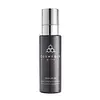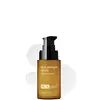What's inside
What's inside
 Key Ingredients
Key Ingredients

 Benefits
Benefits

 Concerns
Concerns

 Ingredients Side-by-side
Ingredients Side-by-side

Water
Skin ConditioningHamamelis Virginiana Water
AstringentCarthamus Tinctorius Oleosomes
EmollientPhospholipids
Skin ConditioningGlycerin
HumectantSodium Acrylates Copolymer
Hydrogenated Polyisobutene
EmollientSodium Lactate
BufferingGlycosaminoglycans
EmollientPolysorbate 20
EmulsifyingCetyl Alcohol
EmollientRetinol
Skin ConditioningRetinal
Skin ConditioningProline
Skin ConditioningSodium Hyaluronate
HumectantHelianthus Annuus Seed Oil
EmollientTapioca Starch
Leuconostoc/Radish Root Ferment Filtrate
AntimicrobialLonicera Caprifolium Flower Extract
PerfumingLonicera Japonica Flower Extract
Skin ConditioningSantalum Austrocaledonicum Wood Oil
MaskingLavandula Hybrida Oil
EmollientGalactoarabinan
Sodium Polygamma-Glutamate
Emulsion StabilisingTocopherol
AntioxidantSqualane
EmollientHydroxypropyl Starch Phosphate
Dimethicone
EmollientPolyglyceryl-10 Stearate
Skin ConditioningGluconic Acid
Xanthan Gum
EmulsifyingTetrasodium EDTA
Citric Acid
BufferingAlcohol
AntimicrobialPotassium Sorbate
PreservativeSodium Glycolate
BufferingSodium Hydroxide
BufferingTrisodium EDTA
Benzoic Acid
MaskingSodium Benzoate
MaskingLinalool
PerfumingLimonene
PerfumingWater, Hamamelis Virginiana Water, Carthamus Tinctorius Oleosomes, Phospholipids, Glycerin, Sodium Acrylates Copolymer, Hydrogenated Polyisobutene, Sodium Lactate, Glycosaminoglycans, Polysorbate 20, Cetyl Alcohol, Retinol, Retinal, Proline, Sodium Hyaluronate, Helianthus Annuus Seed Oil, Tapioca Starch, Leuconostoc/Radish Root Ferment Filtrate, Lonicera Caprifolium Flower Extract, Lonicera Japonica Flower Extract, Santalum Austrocaledonicum Wood Oil, Lavandula Hybrida Oil, Galactoarabinan, Sodium Polygamma-Glutamate, Tocopherol, Squalane, Hydroxypropyl Starch Phosphate, Dimethicone, Polyglyceryl-10 Stearate, Gluconic Acid, Xanthan Gum, Tetrasodium EDTA, Citric Acid, Alcohol, Potassium Sorbate, Sodium Glycolate, Sodium Hydroxide, Trisodium EDTA, Benzoic Acid, Sodium Benzoate, Linalool, Limonene
Water
Skin ConditioningHamamelis Virginiana Water
AstringentGlycerin
HumectantGlycosaminoglycans
EmollientAlcohol
AntimicrobialAlcohol Denat.
AntimicrobialGluconolactone
Skin ConditioningHydroxypropyl Cyclodextrin
MaskingAmmonium Acryloyldimethyltaurate/Vp Copolymer
Sodium Benzoate
MaskingXanthan Gum
EmulsifyingLonicera Caprifolium Flower Extract
PerfumingCocos Nucifera Fruit Juice
EmollientAdenosine
Skin ConditioningAesculus Hippocastanum Seed Extract
Skin ConditioningLavandula Hybrida Oil
EmollientLonicera Japonica Flower Extract
Skin ConditioningMelaleuca Alternifolia Leaf Oil
AntioxidantMenthyl Lactate
MaskingSantalum Austrocaledonicum Wood Oil
MaskingSilybum Marianum Extract
Skin ConditioningSodium Hyaluronate
HumectantTotarol
AntioxidantTocotrienols
Skin ConditioningElaeis Guineensis Oil
EmollientCitric Acid
BufferingPhospholipids
Skin ConditioningPotassium Sorbate
PreservativeTocopherol
AntioxidantSh-Oligopeptide-1
Skin ConditioningPalmitoyl Tripeptide-38
Skin ConditioningWater, Hamamelis Virginiana Water, Glycerin, Glycosaminoglycans, Alcohol, Alcohol Denat., Gluconolactone, Hydroxypropyl Cyclodextrin, Ammonium Acryloyldimethyltaurate/Vp Copolymer, Sodium Benzoate, Xanthan Gum, Lonicera Caprifolium Flower Extract, Cocos Nucifera Fruit Juice, Adenosine, Aesculus Hippocastanum Seed Extract, Lavandula Hybrida Oil, Lonicera Japonica Flower Extract, Melaleuca Alternifolia Leaf Oil, Menthyl Lactate, Santalum Austrocaledonicum Wood Oil, Silybum Marianum Extract, Sodium Hyaluronate, Totarol, Tocotrienols, Elaeis Guineensis Oil, Citric Acid, Phospholipids, Potassium Sorbate, Tocopherol, Sh-Oligopeptide-1, Palmitoyl Tripeptide-38
Ingredients Explained
These ingredients are found in both products.
Ingredients higher up in an ingredient list are typically present in a larger amount.
Alcohol comes in many different forms. Different types of alcohol will have different effects on skin. This ingredient is usually an astringent alcohol.
These alcohols are drying on the skin. They may strip away your skin's natural oils and even damage your skin barrier. Astringent alcohols may also irritate skin.
Other types of astringent alcohols include:
According to the National Rosacea Society based in the US, you should be mindful of products with these alcohols in the top half of ingredients.
Any type of sanitizing product will have high amounts of alcohol to help kill bacteria and viruses.
Fatty alcohols come from plant oils such as coconut oil. These can help hydrate the skin and are non-irritating. Some fatty alcohols include cetyl and stearyl alcohol.
Learn more about AlcoholCitric Acid is an alpha hydroxy acid (AHA) naturally found in citrus fruits like oranges, lemons, and limes.
Like other AHAs, citric acid can exfoliate skin by breaking down the bonds that hold dead skin cells together. This helps reveal smoother and brighter skin underneath.
However, this exfoliating effect only happens at high concentrations (20%) which can be hard to find in cosmetic products.
Due to this, citric acid is usually included in small amounts as a pH adjuster. This helps keep products slightly more acidic and compatible with skin's natural pH.
In skincare formulas, citric acid can:
While it can provide some skin benefits, research shows lactic acid and glycolic acid are generally more effective and less irritating exfoliants.
Most citric acid used in skincare today is made by fermenting sugars (usually from molasses). This synthetic version is identical to the natural citrus form but easier to stabilize and use in formulations.
Read more about some other popular AHA's here:
Learn more about Citric AcidGlycerin is already naturally found in your skin. It helps moisturize and protect your skin.
A study from 2016 found glycerin to be more effective as a humectant than AHAs and hyaluronic acid.
As a humectant, it helps the skin stay hydrated by pulling moisture to your skin. The low molecular weight of glycerin allows it to pull moisture into the deeper layers of your skin.
Hydrated skin improves your skin barrier; Your skin barrier helps protect against irritants and bacteria.
Glycerin has also been found to have antimicrobial and antiviral properties. Due to these properties, glycerin is often used in wound and burn treatments.
In cosmetics, glycerin is usually derived from plants such as soybean or palm. However, it can also be sourced from animals, such as tallow or animal fat.
This ingredient is organic, colorless, odorless, and non-toxic.
Glycerin is the name for this ingredient in American English. British English uses Glycerol/Glycerine.
Learn more about GlycerinWe don't have a description for Glycosaminoglycans yet.
Hamamelis Virginiana Water is made by distilling parts of the witch hazel plant. You can also call this ingredient "witch hazel water".
The name 'Hamamelis Virginiana Water' refers to the distillation product used in cosmetics. On the other hand, 'Witch Hazel' refers to the active drug ingredient.
Unless it is specified to be non-alcohol, many types of witch hazel ingredients are distilled in denatured alcohol.
Witch Hazel water is an astringent, anti-inflammatory antioxidant, and antibacterial ingredient.
It contains tannins. Tannins have a drying effect when used on skin by constricting proteins. The constriction also minimizes the appearance of pores.
Both the tannins and fragrance found in witch hazel may be skin-sensitizing.
Witch hazel water gets anti-inflammatory and antibacterial properties from its catechin and gallic acid content.
Indigenous groups have used witch hazel to help treat inflammation in North America for centuries.
Learn more about Hamamelis Virginiana WaterLavandula Hybrida Oil is an oil.
This Honeysuckle flower extract comes from the Italian honeysuckle. It is an antioxidant, antimicrobial, and fragrance.
Both this and the Japanese Honeysuckle are rich in a natural paraben that give it antimicrobial property. They are effective in inhibiting bacteria, yeast, and mold.
Honeysuckle contains flavonoids and saponins. Both of these components are natural antioxidants that can help soothe the skin.
As most flowers do, honeysuckle has a natural fragrance.
Learn more about Lonicera Caprifolium Flower ExtractLonicera Japonica Flower Extract comes from the honeysuckle flower.
Honeysuckles have skin protecting, anti-viral, and anti-inflammatory properties. It contains many antioxidants, such as luteolin, caffeic acid, loniflavone, and chlorogenic acids.
This honeysuckle is native to East Asia and used in traditional Chinese medicine to treat fever and inflammation.
Learn more about Lonicera Japonica Flower ExtractPhospholipids are naturally found in our skin as they are the main component of cell membranes. Phospholipids have humectant, emollient, antioxidant properties.
Phospholipids are complex lipids that contain glycerin, two fatty acids, and a phosphate group. Some foods that contain phospholipids include soybeans and milk. The phospholipids found in soy come from Lecithin. This ingredient can also be synthetically created.
Due to their hygroscopic nature, they act as both humectants and emollients. Humectants draw moisture from the air to your skin, while emollients help trap moisture in.
The phospholipids in our skin can be naturally depleted. Replenishing the phospholipids in our skin can help hydrate your skin.
Studies show phospholipids display antioxidant activity and may help with reducing the signs of aging.
This ingredient is non-occlusive.
Some types of phospholipids:
Learn more about PhospholipidsPotassium Sorbate is a preservative used to prevent yeast and mold in products. It is commonly found in both cosmetic and food products.
This ingredient comes from potassium salt derived from sorbic acid. Sorbic acid is a natural antibiotic and effective against fungus.
Both potassium sorbate and sorbic acid can be found in baked goods, cheeses, dried meats, dried fruit, ice cream, pickles, wine, yogurt, and more.
You'll often find this ingredient used with other preservatives.
Learn more about Potassium SorbateSantalum Austrocaledonicum Wood Oil is a fragrance and is an oil.
Sodium Benzoate is a preservative. It's used in both cosmetic and food products to inhibit the growth of mold and bacteria. It is typically produced synthetically.
Both the US FDA and EU Health Committee have approved the use of sodium benzoate. In the US, levels of 0.1% (of the total product) are allowed.
Sodium benzoate works as a preservative by inhibiting the growth of bacteria inside of cells. It prevents the cell from fermenting a type of sugar using an enzyme called phosphofructokinase.
It is the salt of benzoic acid. Foods containing sodium benzoate include soda, salad dressings, condiments, fruit juices, wines, and snack foods.
Studies for using ascorbic acid and sodium benzoate in cosmetics are lacking, especially in skincare routines with multiple steps.
We always recommend speaking with a professional, such as a dermatologist, if you have any concerns.
Learn more about Sodium BenzoateSodium Hyaluronate is hyaluronic acid's salt form. It is commonly derived from the sodium salt of hyaluronic acid.
Like hyaluronic acid, it is great at holding water and acts as a humectant. This makes it a great skin hydrating ingredient.
Sodium Hyaluronate is naturally occurring in our bodies and is mostly found in eye fluid and joints.
These are some other common types of Hyaluronic Acid:
Learn more about Sodium HyaluronateTocopherol (also known as Vitamin E) is a common antioxidant used to help protect the skin from free-radicals and strengthen the skin barrier. It's also fat soluble - this means our skin is great at absorbing it.
Vitamin E also helps keep your natural skin lipids healthy. Your lipid skin barrier naturally consists of lipids, ceramides, and fatty acids. Vitamin E offers extra protection for your skin’s lipid barrier, keeping your skin healthy and nourished.
Another benefit is a bit of UV protection. Vitamin E helps reduce the damage caused by UVB rays. (It should not replace your sunscreen). Combining it with Vitamin C can decrease sunburned cells and hyperpigmentation after UV exposure.
You might have noticed Vitamin E + C often paired together. This is because it is great at stabilizing Vitamin C. Using the two together helps increase the effectiveness of both ingredients.
There are often claims that Vitamin E can reduce/prevent scarring, but these claims haven't been confirmed by scientific research.
Learn more about TocopherolWater. It's the most common cosmetic ingredient of all. You'll usually see it at the top of ingredient lists, meaning that it makes up the largest part of the product.
So why is it so popular? Water most often acts as a solvent - this means that it helps dissolve other ingredients into the formulation.
You'll also recognize water as that liquid we all need to stay alive. If you see this, drink a glass of water. Stay hydrated!
Learn more about WaterXanthan gum is used as a stabilizer and thickener within cosmetic products. It helps give products a sticky, thick feeling - preventing them from being too runny.
On the technical side of things, xanthan gum is a polysaccharide - a combination consisting of multiple sugar molecules bonded together.
Xanthan gum is a pretty common and great ingredient. It is a natural, non-toxic, non-irritating ingredient that is also commonly used in food products.
Learn more about Xanthan Gum